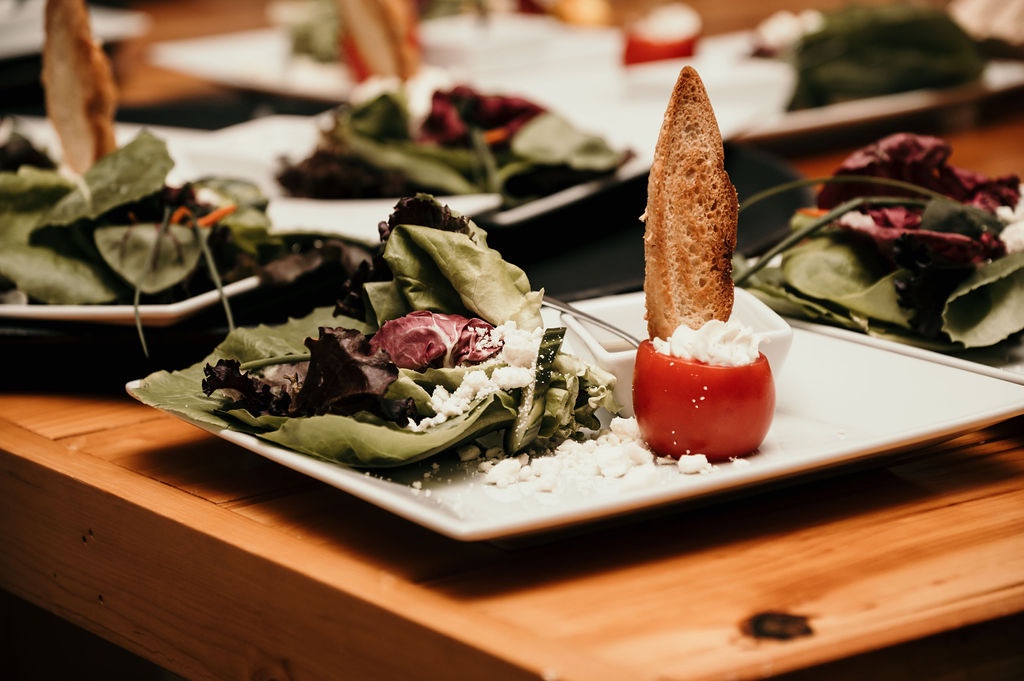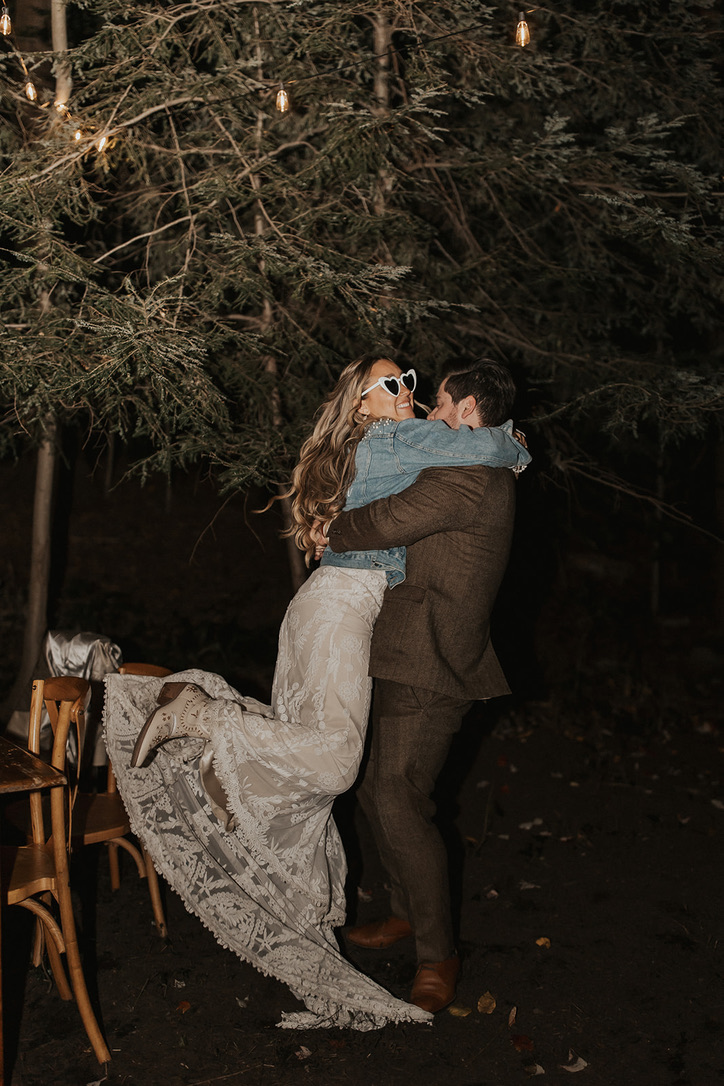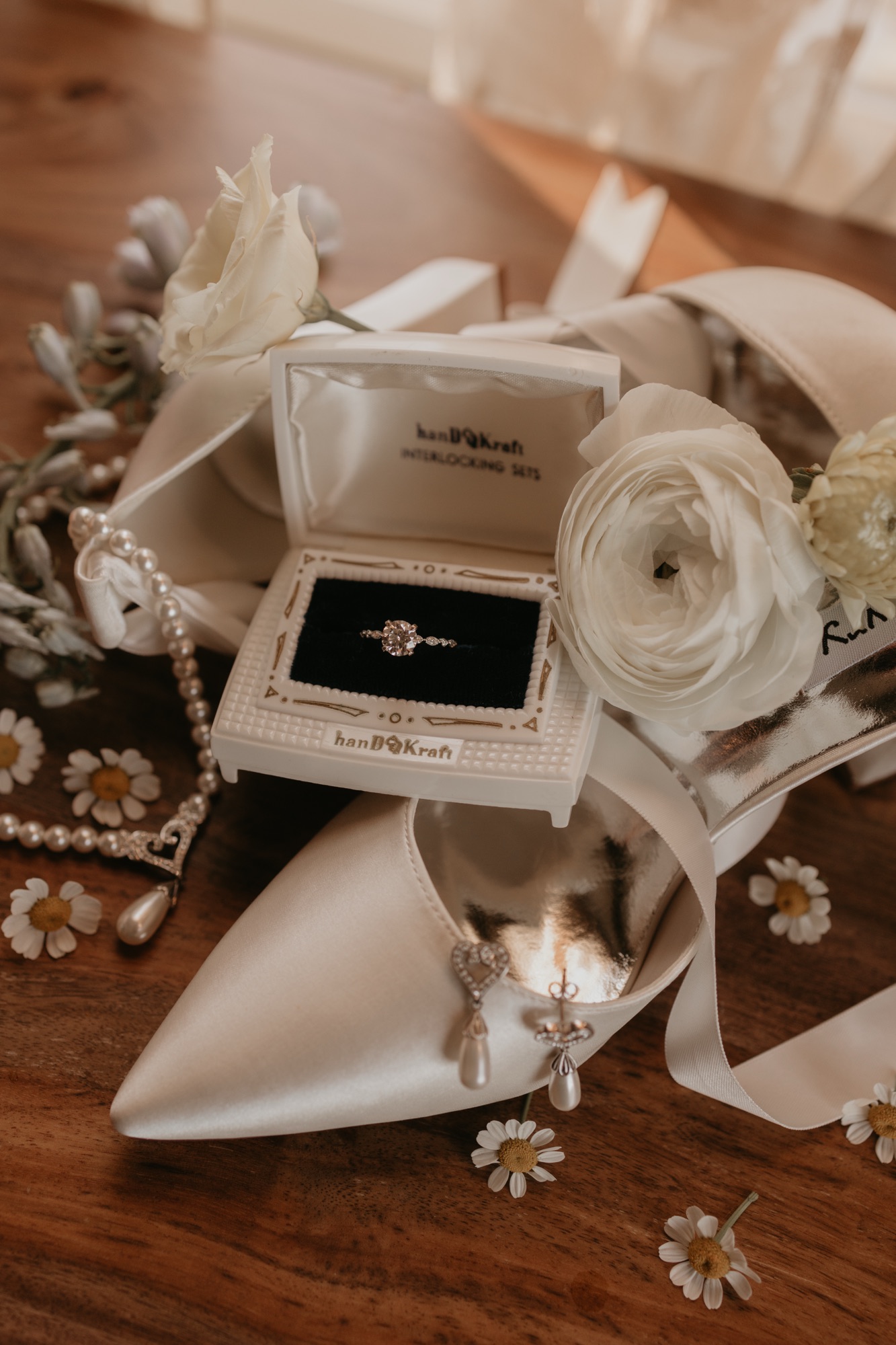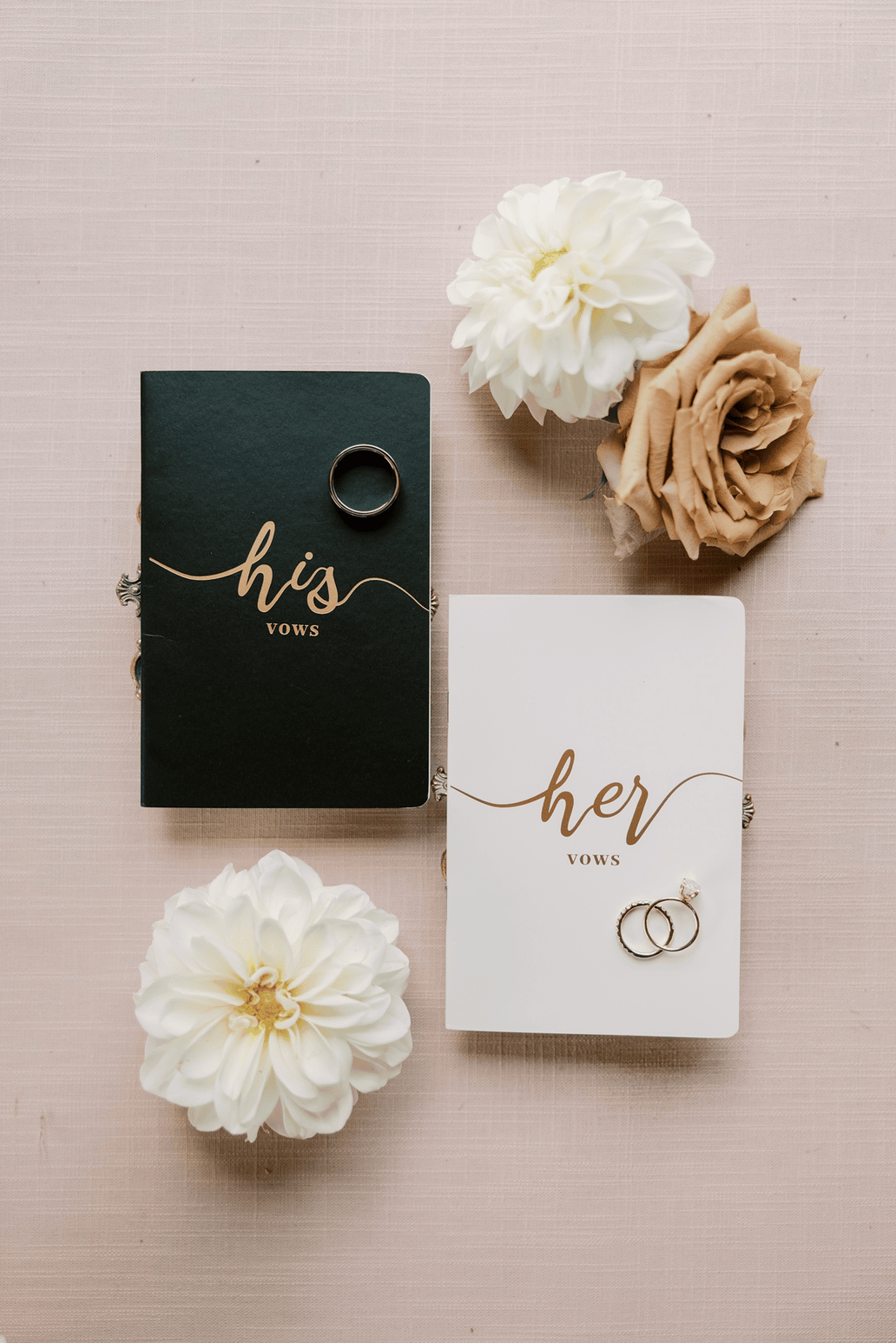Before I became an event planner, I had no idea there were so many dining styles to choose from. I was used to the boring “(well done) Beef, (dry) Chicken or (imported) Fish” menu cards inserted into every wedding invitation in America. Bleh. These days, food is so much more than that. Dining styles have become a way to present and enjoy food and curate an entire dining experience. Here is a list of the most common dining styles:
- Formal Sit-Down: Old reliable. A very common choice for a traditional wedding venue. In a formal sit-down dining style, guests are seated at individual tables with place settings. Servers bring each course to the guests, presenting dishes one by one. There’s usually a predetermined menu, and guests can indicate any dietary restrictions or preferences beforehand. This style offers a refined experience, as guests are served and attended to throughout the meal. This style allows for an elegant and controlled dining experience and is often used for upscale events, such as weddings, galas, and fine dining restaurants.
- Buffet Style: This is a very common option because it gives guests the flexibility to choose which dishes (and portions) they want to try. In buffet-style dining, a variety of dishes are placed on a long table or several stations. Guests serve themselves by selecting the items they want from the spread. This style is popular for larger gatherings, such as corporate events, parties, and casual weddings. Buffets are known for providing a wide selection of foods to cater to various tastes and dietary needs. It’s generally a more relaxed and casual dining option.
- Family Style: Think Thanksgiving. Family-style dining is similar to a sit-down dinner, but large platters of food are placed on the table, and guests pass the dishes around to share. It creates a communal atmosphere and encourages interaction among guests. Family-style dining is commonly seen at smaller gatherings, like family dinners and intimate weddings. This style promotes a sense of togetherness and interaction, as guests engage in conversations while serving themselves and passing dishes. It’s a cozy and communal way of dining, often associated with comfort and a homey atmosphere.
- Stations: A very sophisticated and “grown up” dining experience. Stations dining involves setting up individual food stations with specific types of cuisine or dishes. Guests can move around and select items from various stations, allowing them to try different types of food and interact with chefs or attendants at each station. This style encourages a dynamic dining experience, allowing guests to customize their plates with different options. Stations can include items like sushi, pasta, carving stations, dessert bars, and more. This type of dining is gaining popularity for many events, such as receptions, cocktail parties, and interactive food events.
These styles are all great, but I am saving my favorite dining style for last. Chef Steven Binks of Binksberry Hollow in Wilson, NY introduced me to a mix of formal plated dishes with a more casual flair. So last but certainly not least….
- The “Win-Win”: Picture this, a plated salad. Something a bit more upscale like a bouquet salad (pictured above) which is designed to mimic a bouquet of flowers. The main beef dish will be carved table-side on an old school carving trolley. Your side dishes would be served family style to promote dinner conversation. People get up to mix and mingle for a bit then BAM! Back to the table for a plated dessert. And not just a slice of white sheet cake with white frosting. Your slice of cake is now elevated by incorporating chantilly cream and fresh berries. Maybe even a monogram (the first letter of your new last name, duh) made of cocoa powder on the plate. You know, just to really bougie things up.
Personally, I’m choosing the last one. It’s a great option if you get stuck on which style to pick because it incorporates multiple elements and creates a truly dynamic dining experience. At the end of the day, your choice of dining style depends on the event’s formality, personal preferences, the atmosphere you want to create, and logistical considerations. Each style has its own unique advantages, so you can pick the one that best suits your event’s goals and your guests’ expectations. Guests are most likely to remember the personal touches that made your wedding unique to you, so drop me a message on my contact page to start the planning process today!




